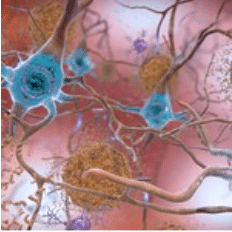Amyloids Abnormal Assembly of Protein
Amyloids are aggregates of protein that are deposited in our various internal organs in certain diseases. Let’s have a closer look at amyloid thoroughly.
Introduction
- Amyloids are proteins or we can say Abnormal protein which is produced in the person’s bone marrow and can be deposited in different tissues and organs of the body.
- Normal Soluble Proteins are responsible for the formation of the Amyloids Fibrils which results in the formation of Insoluble Fibres that are resistant to degradation. The formation of this type of insoluble fibres can cause various diseases and every disease is characterized by a particular protein and peptide that aggregate.
- Some commonly known diseases caused by amyloids are Alzheimer’s disease, diabetes type 2 and mad cow disease(spongiform encephalopathies).
The aggregate of proteins is defined by a fibrillar morphology 0f 7-13nm in diameter.
- When previously healthy proteins start to change their structure and physiological function and develop fibrous deposits of Amyloids Plaques(extracellular deposits of amyloids beta) around cells which can disturb the healthy functionality of tissues and organs, they form Pathogenic amyloids.
Structure
- Amyloids fibrils naturally have a hierarchical structure in which a few nanometers in width several Protofilaments(composed of a subunit of a microtubule) and around a micrometre in length are bundled together.
- This protofilament consists of a cross beta structure with beta strands piled perpendicular through a hydrogen-bonding network to the long axis of the fibril. This structure was previously revealed in the 1950s by a study of Electron Microscopy and X-ray Fiber Diffraction.
- Advanced microscopy has allowed insights into the structure of amyloids fibrils and showed that these fibrils are long, straight and unbranched made of individual subunits of around “46-48” protofilaments. They are observed to twist around one another to grow full-grown fibrils.
Various diseases caused it
The abnormal aggregation of proteins in neurodegeneration causes amyloids to turn infectious and because of this, the diseases which are caused due to its dysfunction are mostly related to Neurodegeneration Disorder. Let us see some of the major diseases caused by it:
- Alzheimer’s disease:
It is a chronic neurodegenerative disease. In this brain disorder, the person’s memory and thinking skills get affected, it even makes the person unable to carry out daily tasks. In 1906, Dr Alois Alzheimer diagnosed a woman who died of an unusual mental illness and found changes in the brain tissue.
She was suffering from memory loss, unpredictable behaviour and language problems. After her death, he found many amyloid plaques and tangled bundles of fibres on examining her brain. These fibres and plaques in the brain are the main features of Alzheimer’s disease.
- Amyloidosis:
Abnormal protein(amyloids), forms in organs and tissues and disturbs the normal functionality. It is responsible for causing rare diseases like amyloidosis. There is a variety of amyloidosis that occur in association with other diseases and many of the others can cause organ failure.
Chemotherapy is considered effective in its treatment, organ and stem cell transplants are also helpful. General symptoms of amyloidosis are severe fatigue, feeling of fullness, joint pain, changes in skin colour, anaemia(low red blood cells count), swelling of the tongue, shortness of breath, sudden weight loss, weakness, weak hand grip, tingling and numbness in legs and feet.
- Parkinson’s disease:
It is a progressive nervous system disorder that affects the movement. This disease gradually restricts the bodily movements. Your face may show very little or no expression in the early stage of the disease, arms may not move while walking. It’s an incurable disease but the doctors can prescribe the medications or surgeries to improve the symptoms.
Conclusion
Amyloids can cause severe damage to our body, is what we read in the above-given information. From Alzheimer’s to Parkinson’s, these are some of the serious diseases caused by amyloids. For a very long time, amyloids have been known for causing some really dangerous human neurological diseases, but several other details have come into existence in recent times.
There is one ‘good’ amyloid which is created by an RNA-binding protein known as Cytoplasmic Polyadenylation Element Binding Protein.
internal links:








